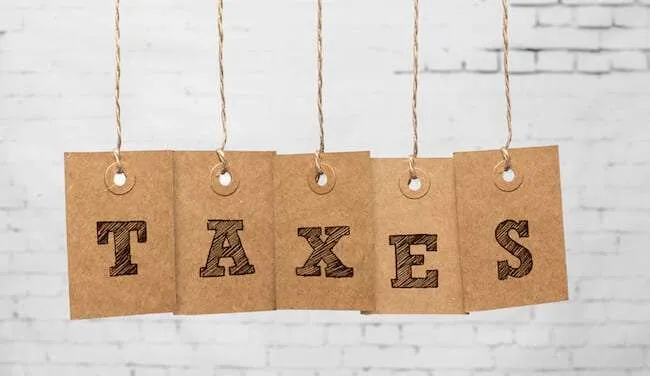At Emparion, we are all about the efficient tax structuring of retirement plans including SEP IRAs. That’s all we do.
Many of our clients have S-Corps and want to get $20k to $40k into a SEP. That can work well.
But did you know you could save thousands using a cash balance plan rather than a SEP? Take a look at saving $9,475 with a cash balance plan below.
But first things first. Let’s take a close look at contribution rules for an S Corp SEP IRA.
2021 Quick Navigation- Can an S Corp have a SEP IRA?
- S-Corp Rules
- Why is a cash balance plan often a better option than a SEP?
- How is SEP IRA contribution calculated for an S Corp?
- SEP Contribution Table
- How do SEP IRAs compare to other plans?
- How much can an S Corp contribute to a SEP IRA?
- SEP IRA for S-Corp: Bottom Line
Can an S Corp have a SEP IRA?
A Simplified Employee Pension (SEP) IRA is a retirement solution crafted explicitly for self-employed professionals, small business owners, and owner-only businesses. They also work very well if you earn freelance income.

It is a tax-deferred retirement account that allows plan sponsors to contribute up to $57,000 to their retirement plan and that of their qualified employees.
S Corps are the bread and butter business for most small business owners. I often recommend for business owners looking to make lower retirement contributions that a SEP IRA might be the best option. This is because of plan simplicity and the ability to open up and fund the plan just before the S Corp deadline.
S Corps are certainly allowed to have a SEP IRA. They are actually allowed for sole proprietors, C Corps and partnerships as well. But the rules work a little differently for each.
S-Corp Rules
Let’s take a look through some of the rules and requirements specific to SEPs.
- Eligibility for SEP IRA: To open a SEP IRA, you must have some business income and you must have a W2 paid to you by the corporation.
- SEP IRA contribution deadline: The final deadline to set up and contribute to a SEP IRA is the same as your tax-filing deadline, including any extensions.
- Required minimum distributions (RMDs): The IRS requires you to take minimum distributions starting at age 72. You can calculate your required minimum distribution using the worksheet provided by the IRS.
If you want to make after-tax contributions you are out of luck. The IRS doesn’t allow Roth contributions under a SEP IRA. Depending on your eligibility, you may be able to contribute to a Roth IRA separately.
Why is a cash balance plan often a better option than a SEP?
So let’s take a hypothetical business owner who is looking to make a contribution of $25,000 into a retirement plan. The table below spells out the actual savings of $9,475 with the cash balance plan option.
Take a look at the following table and then we will discuss the specifics below:

Based on the table, you can see this is really a payroll tax play. A SEP will allow you to get a contribution of 25% of your W2. But for a cash balance plan, your contribution will often be as high as 100% of W2.
So a W2 of $25,000 will get you the same contribution as a W2 of $100,000.
A 100% contribution is not an option for everyone. But if you are 50 years of age or older, this can usually work. You will also get a funding range each year so you can get a little more or less in depending on the income for the year.
The payroll tax savings of $11,475 ($15,300 less $3,825) is a big savings. But, of course, make sure that your wage is reasonable. Your accountant should have some insight.
But don’t forget the cost of a cash balance plan. Most custodians like Vanguard, Schwab and Fidelity won’t charge you an annual fee for having a SEP. There really is not much administration to do because you do not have to file Form 5500.
But a cash balance plan requires actuary review and approval. This will run you $2,000 or so annually. Final cost depends on the plan administrator and structure. But you get the point, these plans are a little more expensive to maintain.
The results are clear cut. You can save a lot with a cash balance plan compared to a SEP IRA, even considering a modest contribution like the one above.
How is SEP IRA contribution calculated for an S Corp?
Let’s now start to get into the specifics. The first step is to determine eligibility. Specifically, employee eligibility can be the biggest challenge.

Your employee qualifies for a SEP IRA if:
- He or she is at least 21 years old;
- Has worked with your firm for at least 3 out of the last 5 years;
- Has earned more than $600 during a calendar year.
You do not establish a SEP IRA for an employee if:
- The employee is covered under a union agreement that includes retirement benefits bargained by the union with your firm;
- The employee is a nonresident alien with no US wages or other compensation from your firm.
How much can an S Corp contribute to a SEP IRA?
The contribution limits are straightforward. You can contribute up to $66,000 or 25% of your annual compensation, whichever is less. If you have eligible employees, you must make the same percentage contributions to their account as well.
The owner is not allowed, for example, to make a 25% contribution for himself and then only make a 10% contribution for eligible employees.
SEP Contribution Table for S Corp
| Compensation | Maximum Contribution |
|---|---|
| $25,000 | $6,250 |
| $50,000 | $12,500 |
| $100,000 | $25,000 |
| $150,000 | $37,500 |
| $200,000 | $50,000 |
| $300,000 | $66,000 |
How do SEP IRAs compare to other plans?
Most of our client conversations start with the same question: What is a SEP IRA account? Is it right for us? How can we open one?
SEP IRAs are suitable for employers or self-employed professionals who intend to make low to moderate contributions ($10,000 to $50,000) to their retirement plan. But they do not combine will with solo cash balance plans.
If you’re a high-income professional, such as a physician with your practice or a highly-paid consultant, or firm with critical employees, SEP IRA may not serve the purpose.

We often suggest cash balance plans to high earners and business owners who want to maximize their retirement savings while saving hundreds of thousands of dollars in taxable income.
We create defined benefit plans, such as cash balance plans, that allow plan sponsors to contribute anywhere between $100,000 to $500,000 (with our 401k cash balance combo structure) annually to a plan.
Pros of SEP IRA
If this is not the first time you are wondering what is a SEP IRA account, you’ve probably heard about the benefits of a SEP-IRA over other retirement plans. Let us find out why SEP IRAs are popular.
- Flexibility: As an employer, you’re not required to contribute every year, giving higher flexibility during difficult times.
- Large contributions: In comparison to traditional IRAs, SEP IRAs allow high contributions ($57,000 for SEP IRA Vs. $6,000 + $1,000 for IRA).
- Easy setup and maintenance: SEP IRAs are easy to set up and manage in comparison to other plans. You have limited filing obligations, making it easier to manage the plan.

Cons of SEP IRA
- No catch-up contributions: Unlike traditional IRAs and 401ks, you will not be able to make catch-up contributions when you reach age 50.
- Same percentage contributions for employees: You will have to make similar percentage contributions to the SEP IRAs of qualified employees, making the plan somewhat expensive.
- No Roth contributions: There is no such thing as a Roth SEP IRA. If you intend to make post-tax contributions, a SEP IRA may not be the best option.
SEP IRA for S-Corp: Bottom Line
However, the first thing that we often hear from small business owners or other clients is not about our defined benefit plans, but more like “What is a SEP IRA account.” We have decided to explain everything about SEP IRAs in this post and then compare it with other retirement solutions available in the market.
One of the best ways to ensure a prosperous retired life is to start contributing to your retirement plan as early as possible. If you’re a freelancer or just starting a business, do not ignore the importance of long-term capital growth.
Also, it is critical to evaluate your financial goals periodically. Instead of sticking with a single plan, upgrade your retirement strategy to maximize your contributions through cash balance plans, defined benefit plans, or other creative retirement solutions.
5 Keys Steps to a SEP IRA S-Corp Contribution
- Determine if a SEP IRA is best for your business. SEPs are elective plans and very flexible. They just don’t allow very large contributions. If you want larger contributions consider a cash balance plan or defined benefit plan.
- Calculate owner contribution. This calculation is pretty straightforward. You can go as high as 25% of your W2.
- Calculate employee contribution. The employee contribution can be a little more complex. In addition to compensation, you need to consider years of service.
- Finalize custodian paperwork. Depending on if you are setting up a new plan or funding an existing one, make sure that the funding paperwork is in line.
- Make contribution before due date. Remember to contribute the funds up to the date the tax return is filed. This includes extension periods.
As a retirement solution provider for small to mid-sized businesses, we come across business owners who are genuinely worried about their retirement preparedness and that of their employees.

Our team at Emparion relieves them of their anxiety by providing custom-defined benefit plans, such as cash balance plans, along with a financial roadmap for all the critical life milestones.

Can a single S corp shareholder (no employees) base his 25% SEP IRA contribution based on his net income , I.e. his K1 income ? Or must he use his W2 wages?
Only on W2 wages. K1 income cannot be used.
Can you contribute to a S-corp shareholder, if he is not a W2 employee of the Scorp?
Unfortunately no. These are company sponsored plans for employees. So if the business is taxed as an S-Corp then employees would have W2s.
Thank you for this writeup!
I am the sole owner and employee of my S Corp. If I run a payroll of say, $20,000, and include a SEP contribution of 25%, or $5,000, I understand that the $5,000 is funded by the business. Does this reduce my ‘net pay’ on my paycheck though? Quickbooks Payroll is calculating it that way. It is deducting the $5000 from gross pay, and then calculating withholding taxes on $15,000 rather than $20,0000–reducing net pay by about $3500 compared to net pay if there was no SEP contribution. Just double checking that this is correct?
You are correct that it is an employer contribution. It sounds like quickbooks is treating it like a 401k deferral? But in either case, you would not include it in your W2 at all except for marking the box that you are covered by a retirement plan. So quickbooks should not be involved. Then make the contribution from your business account and deduct it on the tax return.
Thanks! It turns out quickbooks has an option for ‘employee’ and another for ‘employer match’. When I used the second option, it produced the correct paystub that did not do any employee deduction, but did carry over the contribution to my company expense side of things. Thanks again for your informative website and willingness to answer questions for random strangers!
Glad to help out Peter!
In which year does a cash basis S Corp deduct a SEP contribution. The year actually paid or the designated year for the contribution.
As a general rule, they can fund up to the date they file their taxes and take the deduction for the prior year. Because they can make the payment in the current year and have it be for the prior year, they should designate the year in which they want the contribution applied.
What is max contribution an S corp owner can make if he has solo 401(k) and SEP if his w2 income is $300,000?
The S-Corp owner cannot participate to both a solo 401k and a SEP through the same company. But a solo 401k has a profit sharing component that acts like a SEP. With a W2 of $300k, the owner can do $57k if under 50 and $63.5k if over 50. If the owner wants to get $100k plus into retirement they should consider combining a solo 401k with a cash balance plan.
Can an S-Corp contribute to an owner’s SEP IRA even if it generates a loss for the S-Corp?
Yes it can. You can take up to 25% of the W2 compensation even if this will result in a loss.
What if the S-Corp is at a loss before the contribution? Is it still possible to make the contribution?
Yes you can still make the contribution. However, you may not be able to take the loss in the current year based on basis limitations. But your accountant can run a basis calculation for you.
Nice write-up. Can an S-Corporation with two shareholders set up a SEP IRA?
Yes but it is based on W2 wages and not ownership. So if both owners are eligible and have a W2 then the company can contribute for both.
I am the sole owner and I forgot to make the SEP contribution when I filed my taxes in 2021 for 2020. Can I still make the contribution?
Kathy – the deadline was day you filed your tax return including extensions. So unfortunately it is too late.
Hi
I have a full time job , W2 income , 350,000 is my annual salary
Through my employer I have 457b and CalPERS pension plan.
I have side income through my S Corp ( PC) , expecting annual income before any expenses and deductions around 150,000 .
What’s the best way to minimize my Tax , which retirement plan is best .
I want to keep more money now in retirement and wants to retire by 60 .
Mans stopping my full time job
Hi Nagaraj – In your situation, a cash balance plan would probably make most sense. You are in a high tax bracket and a CB plan will allow for the highest contributions which in turn is the highest tax deferral. This assumes you are at least 45 years old.
Can you highlight any and all ways a solo 401K would be different/better or worse than a SEP if you are an S corp owner?
Thanks!
Certainly. The main benefit to the solo 401k is that it allows larger contributions. The 401k normally has a profit sharing component that acts just like a SEP. You can make a contribution up to 25% of the W2 amount. But the 401k also has an employee deferral which is $19,500 if under age 50 and $26,000 if 50 or over. So with a 401k you can make much larger contributions.
I get paid by my own one-employee S-corp. Each year I do contribute 25% of my W2 to SEP account. This year I see my s-corp income may grow high over $250K gross and SEP may not work as I get paid only annual 75K. I am exploring “Cash Balance Plan” but no idea what it is and how it is different from SEP. Is this also called as Self-Employed 401(k)? What may be the similar account type in Fidelity? Considering my situation, could you please suggest the best possible option. Thanks
Hi Arvind – a cash balance plan is a type of defined benefit plan. It basically will allow you to contribute substantially more than a SEP. It is not a solo 401k. If you are looking to get $75,000 plus into retirement then it might be a great option. Reach out to us at our contact page here: https://emparion.com/contact-us/. We will run an illustration for you and see if it is a good fit.
Hi: Can a S Corp who has only one Employee that started serving this Company in March 2020, can set up a SEP plan now and get the deductions for the taxes in their 1120s for 2020?
Yes as long as they have a W2.
Would setting up a SEP IRA be a violation of having the EIDL loan since one requirement is that owners can’t take distributions or bonuses (money contributed to the SEP will not be from loan funds but from profit made by business)? As S-corp, owner previously took income and distributions in about a 50-50 split, so money being paid to owner was much less in 2020 since owner distributions weren’t allowed under EIDL.
Karen – I think you are fine with the EIDL loan. But you should check with your accountant based on your situation.
Can the S-corp change the contribution amount from year to year?
Yes it can. You can go up to 25% of your W2. But if you have employees that qualify you will have to do the same percentage for them.
Thank you for this very informative article and clear answers to people’s questions.
can you have a sep ira from a sub s where your only income is the k-1 as you did not take a salary in the year
Sorry Robert…you can’t do it. Retirement plans are only available for employees. So you have to have a W2.
Hi i had irs treat me as an s Corp in 2020 after setting up my company I’m a contractor! But I got paid on a 1099! I have no employees! Can I still do the sep ira and if not what other retirement plan can I do?
Hi James – Yes you can still do a SEP. That of course is assuming that you have paid yourself a wage for 2020. You need to have earned income in order to contribute to a retirement. You also could do a cash balance plan (if you want large contributions) or an IRA is you want to start small.
Hello. In 2021 our company filed to be treated as a S-corp. It’s just myself and my husband right now. In 2020 we were sole proprietors. Can we use our net income from 2020 to determine SEP contribution for 2020? We went onto payroll in 2021 so I know it will be based on w2 wages going forward. Having issues with tax software because he also has other self-employment income outside our company and it keeps trying to include that too.
Yes you can use your self employment income for 2020 to make the contribution. For 2021, you will base the SEP contribution on your W2.
Hi
I am owner of two s corporation and getting paid as W2 employees from both in one S corp I started from 2018 and other one since 2015. I can contribute to SEP IRA @25% of my income in both? In one S corp spouse is also employee she can contribute to?
Question came because as per IRS only employee 3 of last five year is eligible
Generally, any employee who is at least age 21 and performed services for your business in three of the last five years is eligible to participant in the employer’s SEP plan
Both S corp have income can we setup Cash balance combo plan for year 2020 or that is too late for 2020?
Hi Sanjay – You can contribute to a SEP for both you and your wife for 2020, but it is based on your W2. Assuming she has a W2 you can contribute for her. The “3 out of 5” rule is the most restrictive contribution level. You can use the SEP for people working less than 3 years but it has to be applied equally to all employees.
It is not too late to do a cash balance plan for 2020. But don’t make your SEP contribution for 2020 until you decide if a cash balance plan is right for you. A cash balance plan will usually work great if you are looking to get $100k plus into retirement. Just reach out to us if you are interested.
Hi!
I have a single member LLC for which I always used Schedule C. In 2019 my self employment tax was significant, to the point it made sense to submit Form 2553 to elect to be taxed as S-Corp in July. It took the IRS over 7 months, I tried calling for weeks until I finally heard that my form 2553 was approved end of February 2021, starting with 2020 tax year. They said official notification should be in the mail soon
Obviously I will be filing for an extension as the deadline for my first 1120s is in few days, but my question is regarding SEP contributions. I already have a SEP plan and I would simply contribute 25% of my net on schedule C, and I already proactively put some money for 2020 in my SEP (since I was still a schedule C). My question is two fold:
1. What should I do with my 2020 contributions to my SEP?
2. For 2021 and beyond, should i start issuing myself a W2 so that I can contribute 25% of that?
Again, single member LLC, taxed as S-Corp, thanks 🙂
Hi NR – you have to have compensation in order to make a SEP contribution. This is true with any qualified retirement plan. Since you don’t have a W2 you aren’t technically employed. Under an S-Corp, the IRS requires you to pay yourself a reasonable wage for the work that you do. Then you would issue a W2 at the end of the year and can do up to 25% of your W2 as a SEP contribution.
Hello Paul
I have a s-corp with 5 employees (some longer than 5 years and some for about 2 years. I contributed $16,000 to my SEP (wage is $80K for 2020). I (or the S-corp) did not contribute SEP to any other employee. Can the S-corp still deduct the $16,000 SEP contribution?
Also, I would like to contribute more to my retirement plan for 2020, is it too late? If not, what plan and how much can i contribute? Would i take the deduction on my 1040? My wife is an employee as well, not an owner and she gets a w-2 of $28K. Thanks in advance!
Hi Ali – you have to contribute the same percentage of W2 to the eligible employees (including yourself). You can correct the contribution and deposit the correct amount and take the tax deduction. If you want to get a larger contribution for 2020 you can only do a cash balance plan or defined benefit plan. You could consider a 401k for 2021.
I am a single member in my S-Corp and contributed to a SEP-IRA in 2020 but over contributed by about $1200 by mistake. I’m not sure what to do about it.
Hi Bob – The IRS allows you to make any corrections for over-contributions. Reach out to the custodian to get the money sent back to you. You of course can’t deduct the excess contribution and you will have to pay tax on any excess earnings. But mistakes happen and it is allowable.
Thanks. Can you please help me with the following questions…
1. I contributed 25% of my W2 Wages (Box1) of $91,000 or should that have been 20%?
2. I was going to fill out the form to Remove the excess and any earnings and transfer to my personal bank acct. I know I will have to pay taxes on both the excess and earnings. Are there any additional forms that I need to file?
3. What is the responsibility of the S-Corp at this point? I read that (1) a 10% excise tax is due, (2) Possibly file Form 5330 (3) If the excess amount is small and the mistake is not recurring, then I might be able to report it under the Self-Correction Program.
I want to do all this correctly but am getting bogged down. Thanks for you help.
Hi Bob – you can do 25% of your wage. So maybe you did not over fund? If you did over fund then call the custodian and tell them how much you need to get out. You will have to pay tax on the excess earnings, but not on the excess contribution as long as you did not deduct it. Just to be safe I would hold of on filing the S-Corp tax return until finalized. Your CPA should be able to assist.
Hello Paul,
Thank you for your article.
I am a self-employed owner with no employee. Which name should I open an account, my name or company’s name?
Thank you,
Hi Ana – you will want to open the SEP under your company name. Even though they have an “IRA” on the end, they are actually company sponsored plans.
Hi Paul, A single owner S-Corp takes the SEP deduction on the 1120S or it is deducted on the 1040 as an Adjustment to Income?
Hi Eric – you take the deduction on the 1120-S tax return in the retirement contribution section. This will lower your K1 income. You would only take it as an adjustment to income if you were a sole proprietor or if it was on a K1 for a partnership return (Form 1065).
Can you include draws when calculating the allowable contribution for an S-Corp?
Hi Lynda – Unfortunately you cannot include draws/distributions. You have to use the W2 because this is the actual compensation you have been paid. If you want to get higher retirement contributions with a lower W2 you would want to use a cash balance plan.
hi Paul
We have S-Corp with 2 partners on W2, for SEP-ISA contributions do we have to set up 2 separate accounts for each partner?
Hi Madhu – yes you would open two separate IRA accounts and fund each. You may find that a solo 401k plan would work better for you. If you have no employees and just the owners you would qualify.
Hi,
I am struggling to understand when and where the SEP IRA deduction shows up as an adjustment on one’s personal taxes versus when it flows through a business’s return. Can you please help explain where the deductions would go for owner and employee in the following situations:
I am sole owner of s corp and I have 2 employees. I contribute 25K a year for all three of us to a SEP IRA. Where do these three deductions show up? Does my 25K contribution to myself show up as an adjustment on my 1040 while the 50K for the employees shows up on the 1120S as a business expense(and effectively shrink my flow through net income)? Or does the whole 75K show up as a business expense on 1120s an reduce my flow through income?
I am a member of a 2 person partnership(50/50 partners) and we each contribute 25K a year to a SEP IRA. Where would my 25K deduction show up – as an adjustment to my 1040 or a deduction on 1065(which then reduces my share of income on K1)?
I am a sole proprietor and contribute $25K a year to a SEP IRA. Does that $25K show up as an adjustment on my 1040 or as a business expense on schedule c?
I am confused because someone just told me that contributions to myself (as an owner) show up on my 1040 as an adjustment, while contributions I make to employees show up on a schedule c. This doesn’t seem right, for many reasons….one being I thought a schedule c only relates to a sole proprietorship, so how would that work for other business formations??
Thank you so much! You give very clear and well thought out answers. I am looking forward to getting straightened out on here!
Hi Kristin – here are the answers to your questions:
1) For an S-Corp, all SEP contributions should be deducted on the S-Corp tax return. There is a line called “Pension, retirement and other qualified plans”. Just include it there.
2) For a sole proprietor, the employee contributions are on the Schedule C and your contributions are an adjustment to income on the 1040.
3) For a partnership, the employee contributions are included as an expense like the S-Corp above. But for your contributions they should be on the K1 and then roll on to your 1040 as an adjustment to income.
Hi Paul
My wife is the 100% owner of the S-Corp and i help her as a result i get 1099 at the end of the year ..My wife never runs a w2 for herself .. She gets a K1 at the end
1) How much can my wife contribute to my SEP IRA Account
2)If she is contributing to my account is she eligible to contribute same percentage to her sep ira account as well
3) Neither me nor my wife gets a w2 from SCORP are we eligible for sep ira
Hi Venkat – in order to contribute to a retirement plan you need to have earned income (subject to employment taxes). So if your wife does not run a W2 then she does not have earned income and cannot participate in any retirement plan. So she cannot do a SEP. If you take the 1099 on a schedule C then you have eared income and can do a SEP.
I am a sole owner / member S-Corp with a W2.
How do you fund an SEP plan? Do I take the distribution from the company bank account to my personal account? Can I transfer directly from the bank account to my SEP plan?
Thanks!
Hi Leigh – just transfer the money directly from your business account to the SEP.
Are there restrictions on a 50% owner of a 1120-S on a 401-K and an IRA
Hi Jerry – you can contribute to both a 401k and an IRA. However, if your income is high enough your IRA contribution will be non-deductible. I would run your tax numbers and then decide before April 15th whether it makes sense to make the IRA contribution.
Hello. Great writing. There is a dentistry with one Shareholder (S-Corp). We are recommending her to go with the Cash Balance Plan. If she made 300K in 2021, how does that work with the formula, the S-Corp will actually be able to contribute up to 300K? And if that plan is chosen, will the eligible employees who make less than 60K average go with that same plan too? if not, can we just choose 10% for example for all?
Also, is this contribution from the S-Corp an Employer’s contribution and the Employees do not contribute from their Salaries at all (just like how a 401 works)?
If the regular plan is picked and the 57K is contributed for the Owner, how does it work for the rest of the employees?
Thanks
Hi Sonia – with a cash balance plan with many employees, the structure can get a little complex. Your best bet is to sign up for a free call so we can discuss the structure with you.